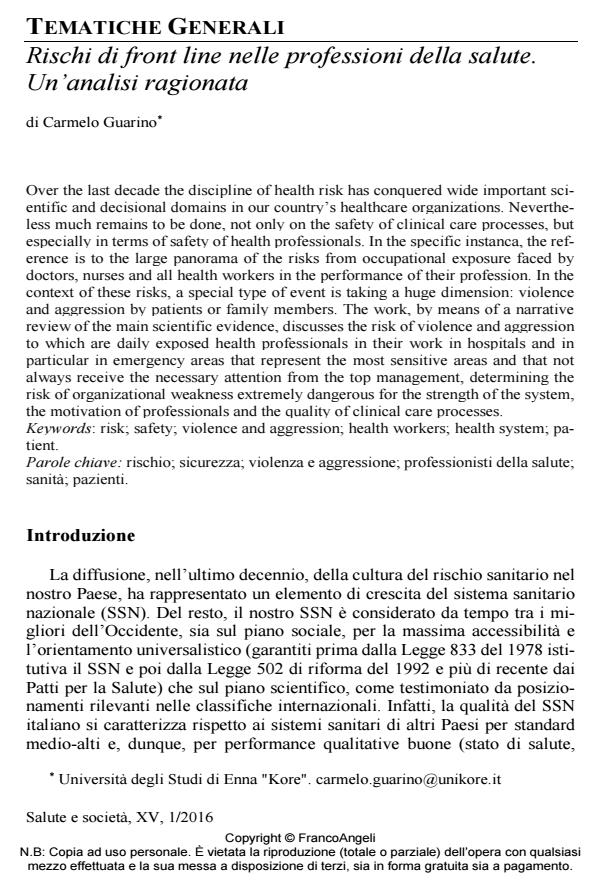Rischi di front line nelle professioni della salute. Un’analisi ragionata
Titolo Rivista SALUTE E SOCIETÀ
Autori/Curatori Carmelo Guarino
Anno di pubblicazione 2015 Fascicolo 2016/1
Lingua Italiano Numero pagine 17 P. 191-207 Dimensione file 504 KB
DOI 10.3280/SES2016-001015
Il DOI è il codice a barre della proprietà intellettuale: per saperne di più
clicca qui
Qui sotto puoi vedere in anteprima la prima pagina di questo articolo.
Se questo articolo ti interessa, lo puoi acquistare (e scaricare in formato pdf) seguendo le facili indicazioni per acquistare il download credit. Acquista Download Credits per scaricare questo Articolo in formato PDF

FrancoAngeli è membro della Publishers International Linking Association, Inc (PILA)associazione indipendente e non profit per facilitare (attraverso i servizi tecnologici implementati da CrossRef.org) l’accesso degli studiosi ai contenuti digitali nelle pubblicazioni professionali e scientifiche
Over the last decade the discipline of health risk has conquered wide important scientific and decisional domains in our country’s healthcare organizations. Nevertheless much remains to be done, not only on the safety of clinical care processes, but especially in terms of safety of health professionals. In the specific instanca, the reference is to the large panorama of the risks from occupational exposure faced by doctors, nurses and all health workers in the performance of their profession. In the context of these risks, a special type of event is taking a huge dimension: violence and aggression by patients or family members. The work, by means of a narrative review of the main scientific evidence, discusses the risk of violence and aggression to which are daily exposed health professionals in their work in hospitals and in particular in emergency areas that represent the most sensitive areas and that not always receive the necessary attention from the top management, determining the risk of organizational weakness extremely dangerous for the strength of the system, the motivation of professionals and the quality of clinical care processes.
Parole chiave:Rischio; sicurezza; violenza e aggressione; professionisti della salute; sanità; pazienti.
Carmelo Guarino, Rischi di front line nelle professioni della salute. Un’analisi ragionata in "SALUTE E SOCIETÀ" 1/2016, pp 191-207, DOI: 10.3280/SES2016-001015